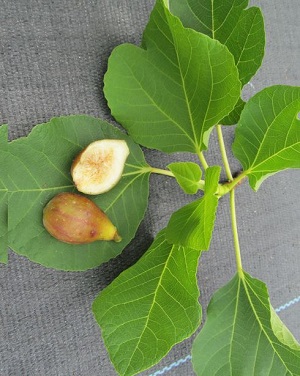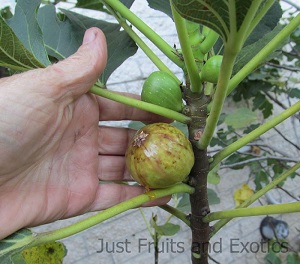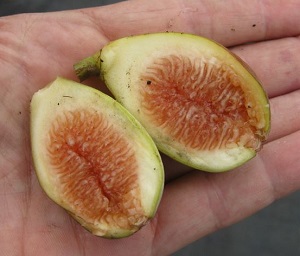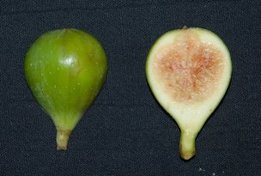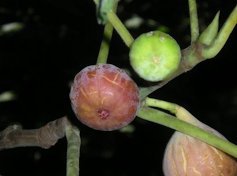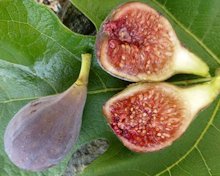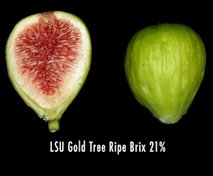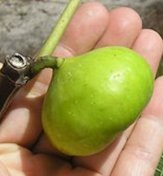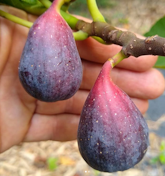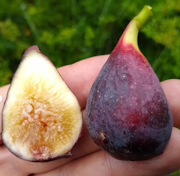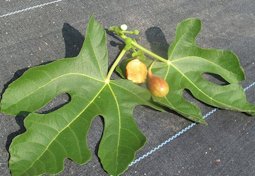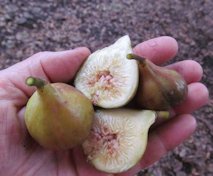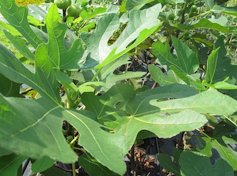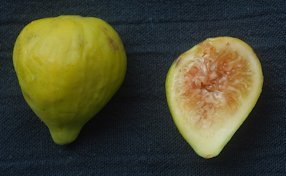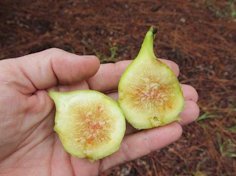Fig Cultivars From the Horticultural Sciences Department, Florida Cooperative Extension Service Institute of Food and Agricultural Sciences, University of Florida and Just Fruits and Exotics Nursery Characteristics that should be considered in the selection of fig cultivars include the following: 1. Cold hardiness; 2. The ability to set fruit without pollination (parthenocarpy); 3. Fruit having a closed eye or ostiole; 4. A long peduncle that allows the fruit to droop and shed moisture; and 5. A green skin on fruit to minimize bird herbivory. 1 Ten cultivars of figs ('Alma', 'Black Spanish', 'Brown Turkey', 'Conadria', 'Celeste', 'Jelly' 'Osborne Prolific', 'Pasquale', 'Tena', and 'Ventura') have been evaluated in a replicated trial at the UF/IFAS North Florida Research and Education Center in Monticello, FL. Other cultivars of figs not tested by the University of Florida include the following: 'Champagne', 'Green Ischia', 'Hunt', 'Kadota', 'LSU Gold', 'LSU Purple', 'Magnolia', 'O’Rourke', and 'Tiger'. 1 A summary of the characteristics of the fig cultivars follows below. Alternate names of cultivars appear in parentheses:
'Alma': This cultivar is reported to produce high yields. 'Alma' is moderately cold tolerant and produces a medium sized fruit. The eye is medium, and the fruit has few seeds and is very sweet. Fruit ripens from late July through August and is good fresh or processed. 1 A Texas AM University release, highly resistant to fruit rots. 'Alma’s fruit is a beautiful light yellowish green. Inside, a halo of white meat with a light red center. A good drying variety with a good sugar content and excellent flavor. Continuous cropper through the summer. Small eye, moderately closed with a drop of resin to block the eye from spoiling rain and insects.This fig tree is one of our most cold hardy, surviving 6F. Zones 7-10. Self fertile. 2 'Black Spanish' (California Brown Turkey, San Pedro): This cultivar yields medium-sized, purplish-brown fruit with a red center. 'Black Spanish' has an eye open. Fruit ripen in June and in August. 1 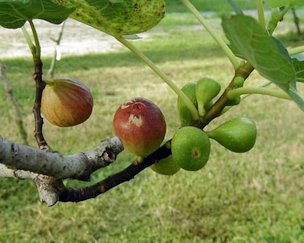 Fig. 5  'Brown Turkey' 'Brown Turkey' (Brunswick, Eastern Brown Turkey, Harrison, Lees Perpetual, Ramsey, Texas Everbearing): This cultivar is probably the most popular fig in the southeastern United States. A small crop of fruit in the spring (called breba fruit) ripens in July followed by the main crop one month later. The fruit is medium-large in size, has bronze skin and amber pulp. The fruit has a small-to-medium ostiole and is good fresh or processed. 1 Old-fashion fig that’s the standard most folks in the South grew up eating . Fruit are medium size, rich purplish-brown with a light red center. Very popular in the South because of its dependable crops and cold hardiness. Zones 7-10. 2
'Celeste' (Blue Celeste, Celestial, and Little Brown Sugar): This cultivar is probably the second-most common fig in the southeastern United States. 'Celeste' has a closed eye and begins ripening in early July. 'Celeste' is good fresh or processed. 1 Known as the “sugar fig”, 'Celeste' fig trees produce medium sized fruit with light brown to violet skin, and strawberry pink flesh. One of the best varieties for drying and preserves. Tree is known for it’s cold tolerance. Trees are tight compact grower, good for containers and small space yards. Fruit ripens mid July to mid August. Zones 7-10. 2 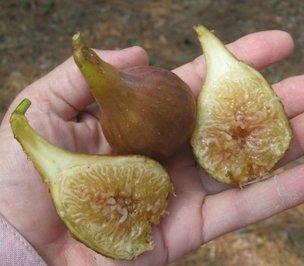 Fig. 9  'LSU Improved Celeste' 'LSU Improved Celeste': Louisiana State University took the 'Celeste' fig variety, which is known for it’s sweet flavor and improved the yield and fruit size. 'LSU Improved Celeste' has light brown to violet skin, and caramel pink flesh. One of the best varieties for drying and preserves. Partially closed eye. Tree has several crops throughout the summer. Fruit ripens mid July to frost. Zones 7-10. 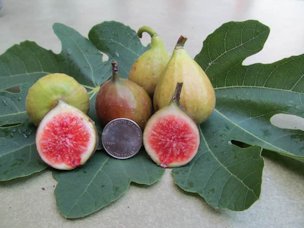 Fig. 10  'Champagne' 'Champagne' (Golden Celeste): This newly released cultivar from Louisiana State University produces a medium-sized fruit with yellow skin, tan colored pulp and a closed ostiole. Fruit ripening is early July.1 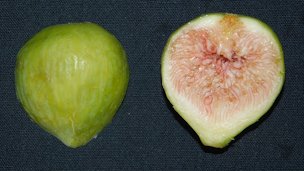 Fig. 11  'Conadria' 'Conadria' (Genoa): This cultivar is a vigorous tree that produces fruit that are green to yellow in color. Flesh of the fruit is pink to red with a good flavor. The eye is small and tight. Fruit ripening is in June and again in August. 'Conadria' fruit are good fresh and excellent dried. 1 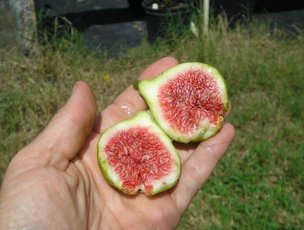 Fig. 12  'Green Ischia' 'Green Ischia' (Ischia Green, Ischia Verte, and White Ischia): This cultivar produces a green small to medium sized fruit which ripens in late July to early August. 1 Skin color is often what draws birds to when to come eat, this variety is green as grass when ripe, fooling both you and the birds. Harvest 'Green Ischia' when the fruit has a soft give when squeezed. High quality green fig with dark red flesh. Closed eye mean good rot resistance. Zones 8B-10. 2 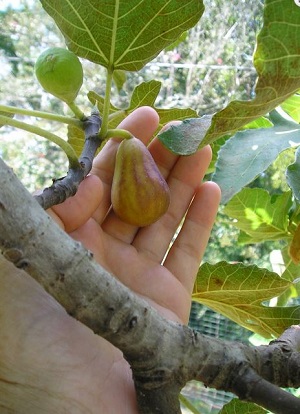 Fig. 13  'Hunt' 'Hunt': Very cold resistant. 'Hunt' fig trees have large, long-necked violet brown fruit with light red flesh. Fruit has a short stem but long neck, allowing the fruit to hang down as it ripens. This habit adds to it’s rot resistance, as the eye of the fig is less adapt to fill with water. Long ripening season. The trees are very dependable producer. Rich sweet flavor. Closed eye. Fruity ripens in July. Zones 7-10. 2 'Jelly' (Mary Lane Seedless): This cultivar produces a longnecked, yellow fig that is medium in size with clear amber flesh and very few seeds. Fruit of 'Jelly' is good for eating fresh and preserving although the skin is soft. 'Jelly' ripens in late July to August. 1 'Kadota' (Florentine): This cultivar produces a medium-large, yellow fruit with an open ostiole that is partially sealed with a honey-like substance. Fruit quality declines with extremely wet weather. Although 'Kadota' figs can be eaten fresh, they are better suited for canning and preserves. Fruit ripening is July. 1
'LSU Gold': This cultivar is a Louisiana State University release that should be picked as soon as it is mature since this fruit has an open eye and fruit spoilage may occur. Fruit is of good quality for eating fresh and for preserving. 1 Another release from the LSU Agriculture Center fig program with good cold tolerance. Fast grower and heavy producer of very large figs. Skin is light yellow, with a pink to light red flesh. Fruit is fairly sweet. Fruit ripens July-August. Zones 8a-10. 2
'LSU Purple': This cultivar is a Louisiana State University release that produces a medium-small, glossy purple fig that has amber-to-pink flesh with a closed eye. Fruit is of good quality for eating fresh and for preserving. 1 This one we have to label as bullet proof. It is one of the few fig tree that is resistant to fruit rot, nematodes and fig rust. Excellent flavor once the tree has gained some age. Probably one of the best varieties for the humid south. Dense grower that looks good in the landscape. Breba crop ripens in late June, crops again in July through September. Zones 8B-10. Self-fertile. 2 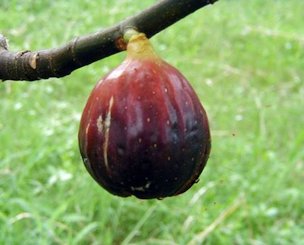 Fig. 18  'Magnolia' 'Magnolia' (Brunswick, Madonna): This cultivar is common in some parts of the southeastern United States, but not in Florida. 'Magnolia' is cold hardy down to 50°F, and often produces the largest fig available. Fruit is asymmetric, bronze in color and has an open ostiole. The flesh is amber to strawberry in color. Ripening is from mid July through August. Fruit should be picked as early as possible since they may split and turn sour under wet conditions. 1 'Magnolia' is the most popular fig for canning and preserves. It’s medium to large fig with a rich flavor. 'Magnolia' is a reliable southern variety recommended by Universities through the south east. Zone 7-10. 2 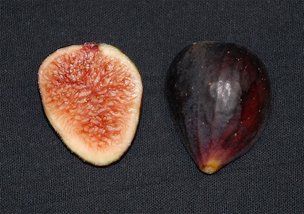 Fig. 19  'Black Mission' 'Mission' (Black Mission, Franciscana): A large, black fig with reddish-pink pulp. 'Mission' is an ever bearing fig that produces fruit from summer to winter. Not sufficiently cold-hardy for the southeastern United States. 1
'O’Rourke' (Improved Celeste): This cultivar is a Louisiana State University fig that produces a small-to-medium sized fruit. The eye is partially closed with the aid of a honey-like substance. Fruit ripens in early July. Fruit is of good quality for eating fresh and for preserving. 1 This is the real deal 'O’Rourke' developed by Ed O’Rourke in 1960 and released through the LSU Agriculture Center fig program. O’Rourke is a cross between a 'Celeste' and a 'Capri' fig from California. It has a long neck with tan to light brown skin and the flesh is a reddish light tan. Different from our 'LSU Improved Celeste'. 'O’Rourke' have 5-7 loped leaves. Zones 7-10. 2 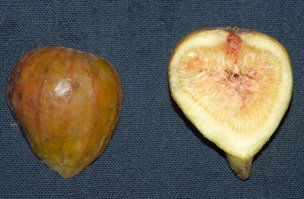 Fig. 23  'Archipel' 'Osborn Prolific' (Arachipel, Hardy Prolific, Neveralla, Osborne, Rust): This cultivar produces a medium-large fruit with reddish, brown skin and light-colored flesh. The fruit is sweet with few seeds. The eye is partially closed. 'Osborn Prolific' is reported to perform better in cooler climates. Fruit ripening is August, and the fruit is best eaten fresh. 1 'Pasquale' (Natalino, Vernino): This cultivar produces a sweet, small, purple fig with amber-to-pink pulp. 'Pasquale' ripens late November to December and is often damaged by frost. 'Pasquale' is not cold hardy. Not recommended for the southeastern United States. 1
'Tena': A medium-large fig with a closed ostiole. 'Tena' thrives in hot, dry weather. The fruit is good for eating fresh or preserving. 1 A California variety that is highly resistant to fruit rot. The fruit is a beautiful light yellow green; inside is a halo of white flesh, surrounding a light red center. 'Tena' is a good drying variety with a high sugar content and excellent flavor. Breba crop gives it a nice long season. Breba crop ripens in late June, main crop ripens mid July to late August. Zones 8B-10. 2 'Tiger' (Giant Celeste): This new cultivar released by Louisiana State University has a large brown fruit, yellow pulp and a partially closed eye. Fruit of 'Tiger' ripens in early July. 1 'Ventura' (Verdal louange): This cultivar produces a large, green fruit with a long neck. The pulp is deep red with excellent flavor. Fruit ripen from August to September. Fruit may be eaten fresh or preserved. 1 Back to Fig Page |
||||||||||||||||||||||||||||||||
| Bibliography 1 Sarkhosh, Ali, and Peter C. Andersen. "The Fig." Horticultural Sciences Dept., University of Florida, IFAS Extension, HS27, Original Pub. Mar. 1994, Revised Nov. 2009, June 2016, and Oct. 2019, Reviewed 19 Oct. 2022, AskIFAS, edis.ifas.ufl.edu/mg214. Accessed 4 Mar. 2017, 15 June 2020, 24 May 2024. 2 Cowley Gilbert, Brandy. "Fig Varieties." Just Fruits and Exotics, justfruitsandexotics.com. Accessed 11 Mar. 2017. Photographs Fig. 1,2,3,4,5,7,8,10,12,15,16,18,20,21,22,25 Cowley Gilbert, Brandy. "Fig Varieties." Just Fruits and Exotics, justfruitsandexotics.com. Accessed 11 Mar. 2017. Fig. 6,9,11,14,23,24 Love, Ken. "LSU Gold, Tena, Gold Celeste, Conadria, LSU Improved Celeste, Archipel." Twelve Fruits With Potential Value-Added and Culinary Uses, University of Hawai'i at Mānoa, College of Tropical Agriculture and Human Resources, 2007. Accessed 4 Mar. 2017. Fig. 14,15 Hepworth, Craig. "LSU Purple." Florida Fruit Geek, floridafruitgeek.com. Accessed 22 June 2020. Fig. 19 Love, Ken. "Black Misssion." Twelve Fruits With Potential Value-Added and Culinary Uses, University of Hawai'i at Mānoa, College of Tropical Agriculture and Human Resources, 2007. Accessed 4 Mar. 2017. Published 11 Mar. 2017 LR. Last update 24 May 2024 LR |
||||||||||||||||||||||||||||||||
